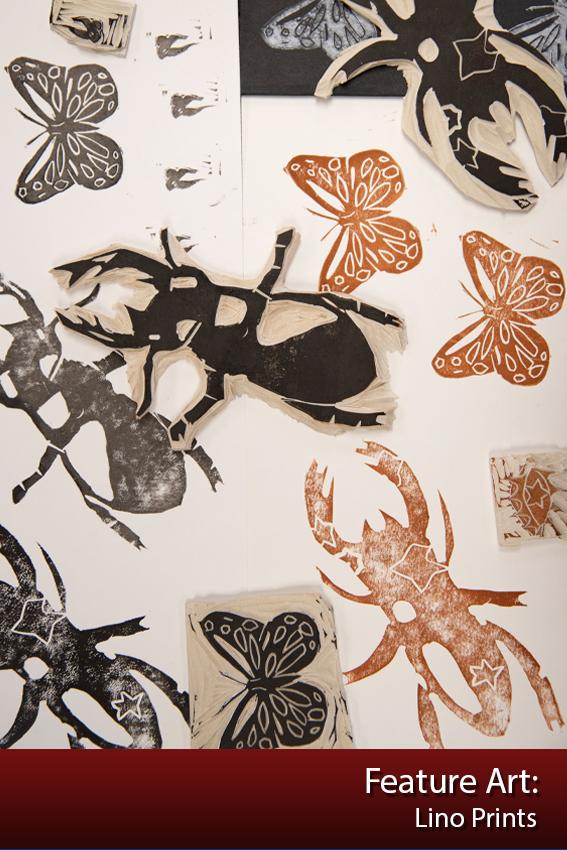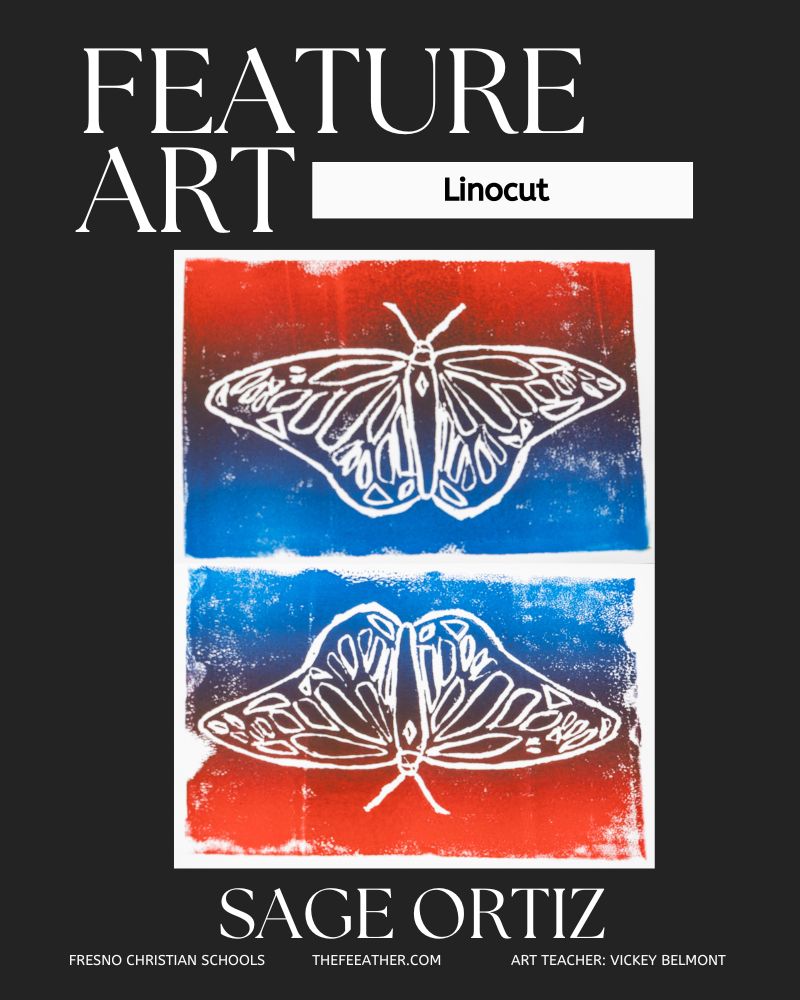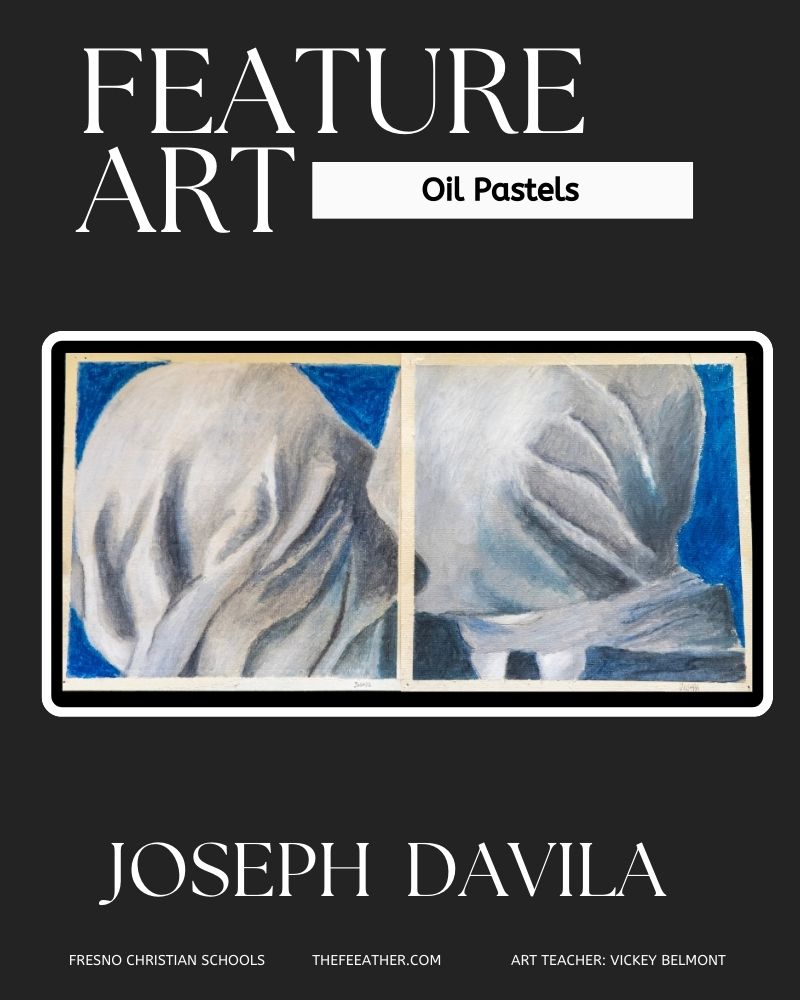Feature Art: Lino Prints
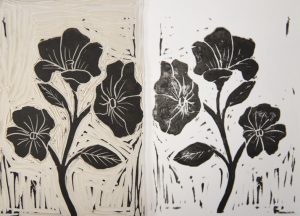
Project summary by art teacher Vickey Belmont
Linoleum was first invented in the 1860s. It wasn’t used as a medium for printing until the early 1900s in Germany, where it was first used for making patterns on wallpaper! Artists ranging from Pablo Picasso to Henri Matisse have made linocuts, and today it is considered a respected art form. Artist Pedro Joseph de Lemos simplified the method for art school and introduced new techniques from color linocuts.
A linocut it is a method using a sheet of linoleum and using a subtractive cutting method, meaning you take away the parts of linoleum where you want to leave the white of the page, and keep the parts you want to be inked! In the result you have a linocut that can reproduce the same image over and over again.
The materials that you need for this project are; linoleum, lino cutting tools, ink, a brayer to spread the ink, a piece of plexiglass to spread the ink on and paper for your project. All these items can be purchased at any crafts store or purchase a kit like this one online.
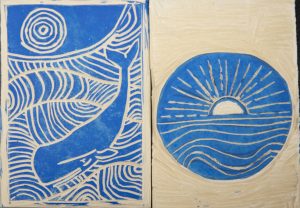
The first thing you need to do is come up with a design to carve. Draw your design on a separate piece of paper, the blocks we use allow the students to turn the paper over and rub the graphite design directly onto the lino. This is called the pancake method of transfer. Once your design is on your block you need to know what areas you want to cut away and what areas you are leaving. Now you are ready to start carving your block.
Safety is very important when using the carving tools for this project. Always cut away from you and keep your fingers on the bottom side of the block away from the path of the tool when carving. Know where your fingers are when you are working. It sounds weird, but be aware to keep them away from the tools path, any slip can cause a deep cut and the blades are sharp! This linked website gives you a lot of information on how to start and what you need to know about lino printing.
Interview with Grace Tienken
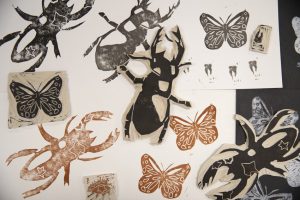
Sophomore and Art 1 student Grace Tienken made multiple stamps of various sizes and subjects.
“The most challenging part was probably trying to not carve too deep because then the stamp looks messy,” Tienken said. “It ended up being messy anyways but that’s kind of my thing.”
She made two stamps depicting beetles, one of a butterfly and one of a tooth.
“The most enjoyable part was being able to stamp and see how they turned out, then further refining the shape if needed,” Tienken said.
To see more artwork, read Featured Art No. 2, 2022-23.
For more Feather articles go to Sense of Style: Following the trends and Susan Lynch lectures at San Joaquin Valley Town Hall.


